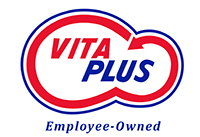
Spoilage is a challenge that all producers face at some point, and the cost of not addressing it can be high. For example, if corn silage is worth roughly $40 per ton, a 5,000-ton pile is worth $200,000. Even a 1% loss on this pile means a loss of $2,000 worth of feed. Typical losses from spoilage easily exceed this number. Preventing spoilage means feed stays in the pile and money stays in your pocket.

Visible molds are the most obvious indicator of spoilage; if visible molds are present, spoilage has been taking place for some time already. Excessive heating of the feed also indicates spoilage. An infrared picture can find hotspots across a silage face, indicating that spoilage has begun in those areas. Temperatures across the face should not vary by more than 15 degrees F. A temperature probe can also be used to determine if heating is occurring. The core temperature of the feed should be no more than 10 degrees F warmer than the temperature on the day of ensiling.
Yeasts are a root cause of spoilage. You may be able to smell the presence of yeast but consider sending a sample to a laboratory for a yeast and mold count and/or identification depending on your silage management goals.
Harvesting crops at the appropriate moisture, excluding as much oxygen as possible through proper packing, and timely covering with an oxygen barrier plastic are the first steps in reducing opportunities for yeast growth. The next consideration is an appropriate feedout rate as oxygen is reintroduced at the opening of a silage face. Ideally, 12 inches or more should be fed off the face daily during warm weather and 6 inches or more should be fed off during the winter. If this is not possible due to sizing or other constraints, other tools can be used to control yeast growth.
Use of a bacterial inoculant containing Lactobacillus buchneri, such as Crop-N-Rich® Nexus or Crop-N-Rich Buchneri, is one such tool. L. buchneri consumes lactic acid and produces acetic acid, which kills yeasts that would otherwise lead to spoilage.
Crop-N-Rich Nexus contains an upfront fermenter (L. plantarum MTD/1) to improve dry matter recovery as well as 200,000 CFU per gram of L. buchneri PJB/1. Crop-N-Rich Nexus should be applied to any forage crops intended for ensiling where spoilage is of particular concern.
Crop-N-Rich Buchneri applies 600,000 CFU of L. buchneri PJB/1 per gram for high moisture corn and 400,000 CFU per gram for earlage or snaplage. Due to the corn grain’s natural sugar content, creation of lactic acid and subsequent drop in pH in these silages can be achieved without the assistance of an upfront fermenter. Yeast growth, however, is a large concern with high moisture corn and the yeast-killing action of L. buchneri is well-suited to address this issue.
For more information on inoculants or assistance with these spoilage analyses, reach out to your local Vita Plus representative. They will be happy to assist you in meeting your forage goals.



